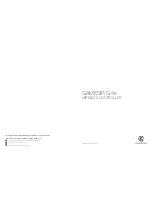
Fan Coil Actuator FCA 2
Updated: Feb-16 (subject to changes) Page
89
of
89
P controller as temperature controller
Just as in the previous example, the P controller behaves in a heating control.
The setpoint temperature (21 °C) can never be completely reached.
The permanent control deviation is increased the higher the heat losses, i.e. the colder the outdoor
temperatures.
6.9.3 Response of the PI controller
In contrast to the pure P controller, the PI controller functions dynamically.
With this type of controller, the actuating value remains unchanged, even at a constant deviation.
At the first moment, the PI controller sends the same actuating value as the P controller.
However, this will be increased further the longer the setpoint will not be reached.
This increase is time-controlled over the so-called integration time.
During this calculation method, the actuating value will not be changed anymore when the
setpoint equals the actual value.
In our example, this results in the balance between feed and discharge.
Note on temperature control:
A good control depends on the adjustment of bandwidth and integration time with the room to be
heated.
The bandwidth influences the increment of the actuating value change:
Large bandwidth = finer increments for the actuating value change.
The integration time influences the response time to temperature changes:
Long integration time = slow response.
Poor adjustment can result in either the setpoint value being exceeded (overshoot), or the
controller taking too long to reach the setpoint value.
The best results are generally achieved using the standard settings.

































